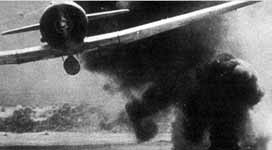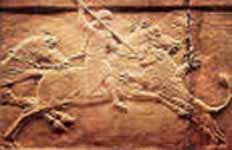Errors
The Marco Polo Bridge Incident
Trusting Government DocumentsThis is a short page. It points out the danger of placing confidence in official documents. Official documents, whether public or private, very often have an advocacy function. That danger was succinctly expressed by John Martin Vincent (1911) in this way:
All of these fall more or less into the category of strategy. . . In giving the causes for the declaration of war, each side may be relied on to give reasons favorable to itself.
This used to be standard knowledge. When that knowledge is not possessed, or when it is ignored, we have a substandard situation. In the following story, names have not been changed, and all information given is from firsthand knowledge.
The Marco Polo (or Lugou) Bridge is an impressive stone structure about ten miles outside of Peking. On 7 July 1937, it was the scene of an "Incident" between Japanese troops (operating somewhat south of the border of Manchuria; their presence had already been the subject of a futile Chinese protest to the League of Nations) and local Chinese ones. Improprieties were claimed. Hostilities rapidly escalated. This is usually regarded as the date of the opening of World War 2 (Asian Version).
Robert Butow (Japan's Decision to Surrender, 1954; Tojo and the Coming of the War, 1961) had made a reputation for himself by his energy in utilizing original Japanese sources for the Pacific War. Like many modern historians, he had contempt for classical models and classical cautions. He regarded modern documents as intrinsically unproblematic. His approach, which had demonstrably worked for him, was simplistic. To his PhD students, he gave this recipe for success: (1) get a grant, (2) go to Japan, (3) locate a document, preferably an official one, which no one else has used, (4) write it up, and (5) there you are. One thesis had been written on this model by Katsu Hirai. Her subject was the Marco Polo Bridge Incident. In the oral examination, Hellmut Wilhelm challenged a particular detail. Katsu responded by citing an official Japanese government document. Hellmut's reply deserves to be immortal, and it is the intention of this page to make it immortal. He said:
"I was there. It isn't true."
It might be imagined that a crisis ensued, at that exam session, but it did not. The outcome could have been predicted by anyone who knows academe. Department protocol took precedence, as it always does, over all other considerations, including historical truth. The candidate passed. The thesis was accepted without change. The degree was awarded. Departmental colleagueships continued unruffled. Hellmut used to tell this story with his usual roguish twinkle. As for Robert Butow, he continued to instruct students in his no-brain approach to doing history.
That was a loss for history, and Hellmut's twinkle, however charming as a way of losing an argument (or not having an argument), was out of place. The methodological issue needed to be fought to a finish, and the right people needed to win. The right position may be summed up thus: All documents, including modern ones, need to be examined with a close philological and historical eye. The tendency of reports to embody what superiors want to hear, and the tendency for government documents to justify government policy, need to be routinely recognized by anyone presuming to meddle in the difficult business of finding out what happened in the past. We can't assume that the last of our troubles with Japanese documents are over when we have learned to read Japanese documents. On the contrary, our troubles are just beginning. In the case here described, caution was all the more called for, given the transparently phony nature of the Incident itself, in which a war just waiting to happen found a way to construct just the pretext that it needed.
So much for modern times. We also need to recognize the potentially lying nature of the boasts of ancient rulers, as seen in their official likenesses, their public inscriptions, or their state records. An official lie, a government lie, does not advance in credibility merely by being buried in the ground for two thousand years. Whether governments lie about the atrocities of the other side, or brag about their own atrocities, modern ones have no monopoly on lying. Ancient governments knew all about it. It is only the historian (it can sometimes seem) who has never heard of it, and who wanders innocently back and forth, wide-eyed in a fantastical landscape, believing every conquest claimed, and accepting every atrocity asserted.
It is not good enough. The historian himself should be deeply honest, as Ranke enjoins. But it is going too far to impute honesty to the people who wrote the source documents. There are too many other kinds of work that a source document, in its own time, may have found to do.
Caveat Lector.
15 June 2004 / Contact The Project / Exit to Outline Index Page


